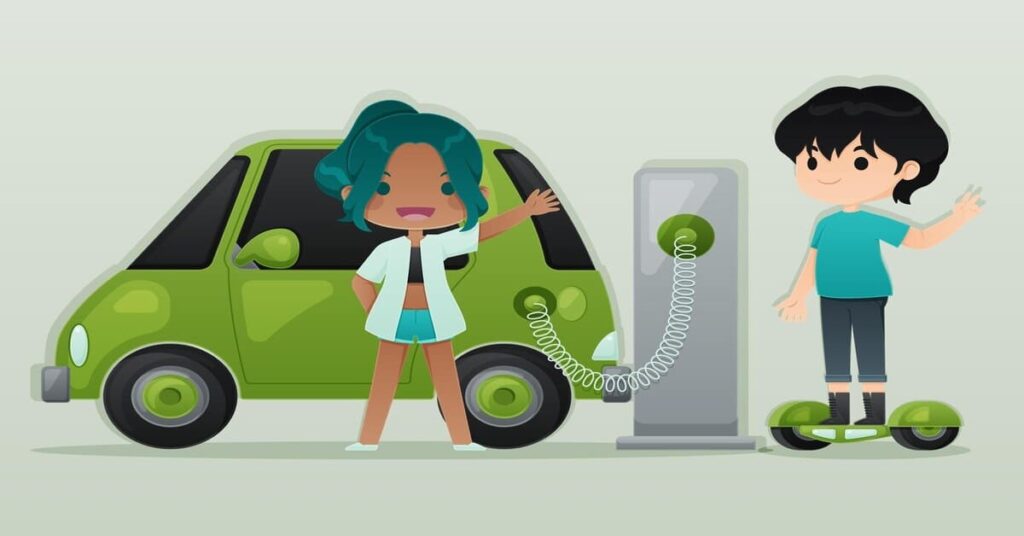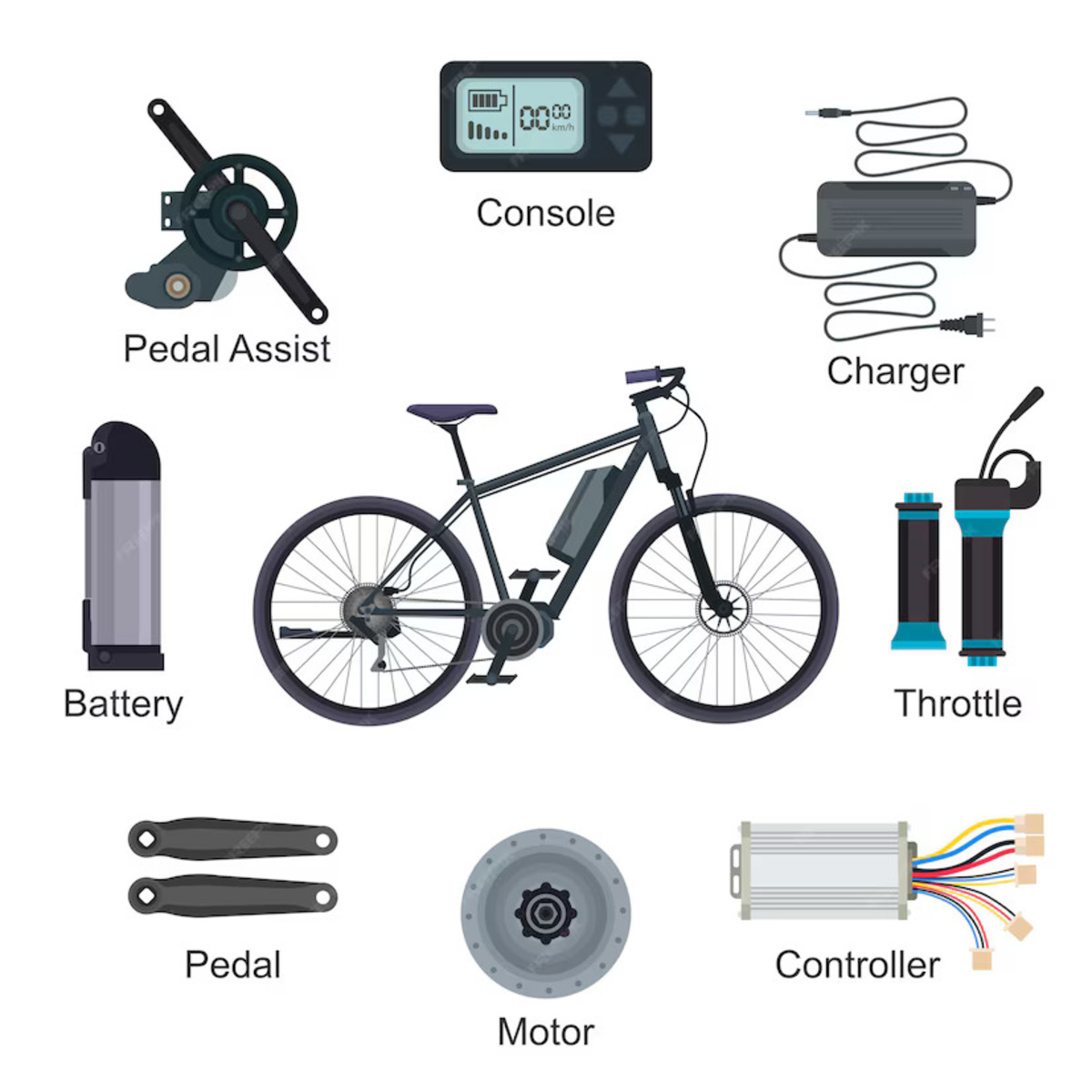No doubt the future of electric vehicle is demanding, however, the increasing pollution and a shortage of fossil fuels have attracted the world’s attention to energy-saving and nature-friendly electric vehicles. If compared to fossil fuel vehicles, the emission factor of greenhouse gases in electric vehicles is zero, so it is very conducive to achieving a green environment to sort out the climate crisis and alleviate environmental pollution. EVs help to reduce dependency on fossil energy and promote sustainable energy. Electric vehicles became an important means to solve environmental issues. A continuous breakthrough in EVs would surely accelerate the adoption of EVs. Here we will provide you the insights of EV adoption challenges and 9 points to improve it.
Microplanning, innovation, and financial subsidies play crucial roles in the development of the EV market. Being a nascent technology, EVs face many challenges, such as limited range, long charging time, high cost, etc., but it is true to say that the future of EVs is bright. EVs are eco-friendly, produce no carbon, and run quietly.
The government is strongly supporting EV buyers by providing many incentives and subsidies on the purchase of EVs, but even then, the adoption of EVs is still lagging. Let us dive into it to know the reason why EV adoption is slow.
Also read: 10 Things To Know When Buying An Electric Vehicle
Also read: 12 Effective Tips for the Maintenance of Electric Vehicle Batteries
EV Adoption Challenges And 9 Points to Improve It
Above heading is divided in two parts as below:
- Why EV Adoption is Slow in 5 Major Points
- 9 Essential Points to Improve The Adoption Of Electric Vehicles
Why EV Adoption is Slow in 5 Major Points
- Lack of awareness
- Not suitable for a long trip
- Cost uncertainty
- Slow performance
- Charging time of vehicles
Now lets us discuss the above points of why EV adoption is slow in detail:

1. Lack of awareness:
One of the biggest reasons people are not adopting EVs is a ‘lack of awareness.’ Many people in India are not aware of the benefits of electric vehicles, such as how they improve air quality and produce no pollution. Lack of awareness about EVs does not let them go for electric vehicles. The media does not provide any benefit coverage for electric vehicles. If people have no interest in learning new technologies, they will not show their interest to know about them. Organizing a public event can be very helpful to showcase the EV experience to the public.
2. Not suitable for a long trip:
Range anxiety is the biggest issue that prevents people from owning electric vehicles. The most expensive vehicle can travel about 640 kilometers or more. EVs create fear in the minds of EV owners that electric vehicle can leave us in the middle, especially if they go on a long trip. Although technologies are improving in EVs to provide better range yet many consumers are still worried about it. So, it does not let them go ahead with buying an electric vehicle.
3. Cost uncertainty:
Cost uncertainty is very common, and it brings new challenges to the purchase of electric vehicles. The high cost of electric vehicles largely depends on the battery, which is the most expensive component of an electric vehicle. EVs use the same battery that is used in your laptop, mobile, etc., but their size is bigger, and they produce more energy. Batteries have cathodes in each cell, and the metals such as lithium, cobalt, and nickel that are required for cathodes to produce more energy are very expensive. First, these metals are to be mined, then processed, and finally converted into pure chemical compounds to be used.
4. Slow performance:
Another reason why people are still hesitant to buy an electric vehicle is its slow performance. Electric vehicles cannot generate power as quickly as traditional vehicles do, as they are run by an electric motor, not the engine, and the car’s acceleration depends on how the motor is designed. Electric cars also do not have gear, which is why their speed is not as fast as a traditional vehicle.
5. Charging time of vehicles:
Charging time is another point that does not allow people to use EVs. There is no doubt that electric vehicles take more time to charge than traditional vehicles, but you have the option of a fast charger that will recharge your vehicle quickly.
9 Essential Points To Improve The Adoption Of Electric Vehicles
EVs are the future of cars. With the development of new and advanced technology, many companies are coming up with solutions for range anxiety, lack of charging stations, charging time, increasing battery costs, etc. Everyone needs to understand that electric vehicles are not only environmentally friendly but also have several other advantages over traditional cars. If the advancement continues in the EV sector, the day is not far when people will prefer to buy only EVs over gasoline vehicles
Please find 9 Essential Points Improve The Adoption Of Electric Vehicles
- Expand charging infrastructure
- Subsidies and incentives
- Customization of batteries
- Awareness program
- Competitive pricing
- Keep the environment clean
- DC charger lessens the charging time
- Market strategies are helpful to increase sales
- Customer reviews
Now we will discuss the above points to improve the EV adoption in detail:
1. Expand charging infrastructure:
To sort out the problem of range anxiety, expand charging stations (AC and DC). If there is more charging infrastructure, it can ease consumer concerns. Constant improvement in battery technology also allows every owner to travel a long distance. As the charging infrastructure expands, the range anxiety will disappear. The government should plan to install charging stations at every petrol pump so that EV owners worry regarding the lack of charging stations will be resolved and they will have no doubt about buying an EV as their next vehicle.
Consumers remain worried about how often they need to charge their vehicles. Government and manufacturer companies became directly involved to know about the availability of the charging stations to make the consumer feel at ease when purchasing an EV.
2. Subsidies and Incentives:
The high cost of electric cars deters consumers from purchasing an EV, but the government is addressing this issue by offering subsidies and incentives for the purchase of EVs. You will notice a significant difference if you compare the price of an EV when it was initially introduced with the pricing today. As technology advances, EV prices decline, and they become more affordable and powerful. Incentives and subsidies are used to encourage EV and consumer adoption.
Government support can be helpful for the average consumer to afford an electric vehicle.
3. Customization of EV Batteries:
To increase the sale of electric vehicles, manufacturer companies are focusing on replacing the expensive metal of the EV battery, which is cobalt, with nickel. The biggest advantage of using cobalt is that it is not as expensive as other metals and contributes to the manufacturing of cheap and affordable batteries.
If the battery is integrated with the vehicle, it can cut down on the volume of used material and naturally reduce the cost of an electric vehicle. To increase the sale of EVs, companies target reducing the cost of motors by producing new and innovative technology in the next couple of years.
4. Awareness program:
The government should run an awareness program to make people aware of the benefits of EVs so that it will encourage them to go for EVs. For instance, if you think that petrol or diesel vehicles are cheaper to buy than electric vehicles, you need to understand that their (traditional vehicle) maintenance is costly, whereas if an EV is costly to buy, its maintenance is low, so things become equal.
Besides it, one of the biggest benefits of EVs is that they are ‘environment friendly.’ This is the time when we are all suffering from pollution, dust, and many diseases because of the harmful gases that emit from traditional vehicles. Proper education and awareness about electric vehicles can dispel myths about them.
Customer awareness is necessary to move one step ahead in the acceleration of electric vehicles. If the customer has good knowledge about EVs, it will develop his interest in buying them.
5. Competitive pricing:
It helps in increasing sales. Manufacturers are offering EVs at a competitive price to encourage sales.
6. Keep the environment clean:
As electric vehicles produce no harmful gases, contribute to cleaner air, and slow the progression of climate change.
As pollution is increasing rapidly, especially in metropolitan cities, the day is not far when we will suffer from severe diseases. So why wait for the worst situation? To keep the environment clean, you should stop using traditional vehicles. ‘Green Vehicle-Green Environment’ is a sustainable logo for developing India to go ahead in the market of EVs.
7. DC charger lessens the charging time:
The use of a DC fast charger can reduce the charging time of your EV. If you are in a hurry to go somewhere, then use the fast charger to get your vehicle charged soon. At present, 80 percent of batteries can be filled up within 30 minutes by using a DC charger. This charging time was longer in an earlier time, but because of steadily improving technology, it will be reduced in the coming time. Such improvements in technology will speed up the sale of EVs too.
Electric vehicles should be promoted in a way that focuses on ‘green attributes.’ The government should highlight the positive impact of electric vehicles to promote them. Future advancements in EVs will make them more competitive.
8. Market strategies are helpful to increase sales:
Market strategies should bring attention to speed, acceleration, and charging stations. In order to motivate people to switch to electric vehicles, the government and manufacturers should work together to discuss the concerns of people regarding EVs. To increase the sale of EVs, EV manufacturers should tap the opportunity of marketing.
9. Customer reviews:
As EVs are new in the market and users are apprehensive about buying them, customer reviews play an important role. Reviews build credibility in the mind of the user. Positive reviews give confidence and assurance about the purchase of electric vehicles. Three strategies, such as awareness, consideration, and conversion, should be followed to make the user ready to buy an electric vehicle. Awareness gives detailed information about an EV; consideration focuses on the fact that you are planning to buy an EV; and conversion changes your mind into buying an electric vehicle.
Conclusion
There are many hurdles standing in the way of widespread adoption, but the collaboration of automakers and companies is a creative way to stick together for the development of the electric car ecosystem. The incentives encourage people to buy electric vehicles as they cut down on the cost of EVs. Public education is necessary to make people aware of the benefits of electric vehicles. The awareness program will surely motivate them to consider electric vehicles as a viable option for transportation. Marketing through social media is another fruitful way to reach potential customers. With the right policies and campaigns, people can move towards EVs.




